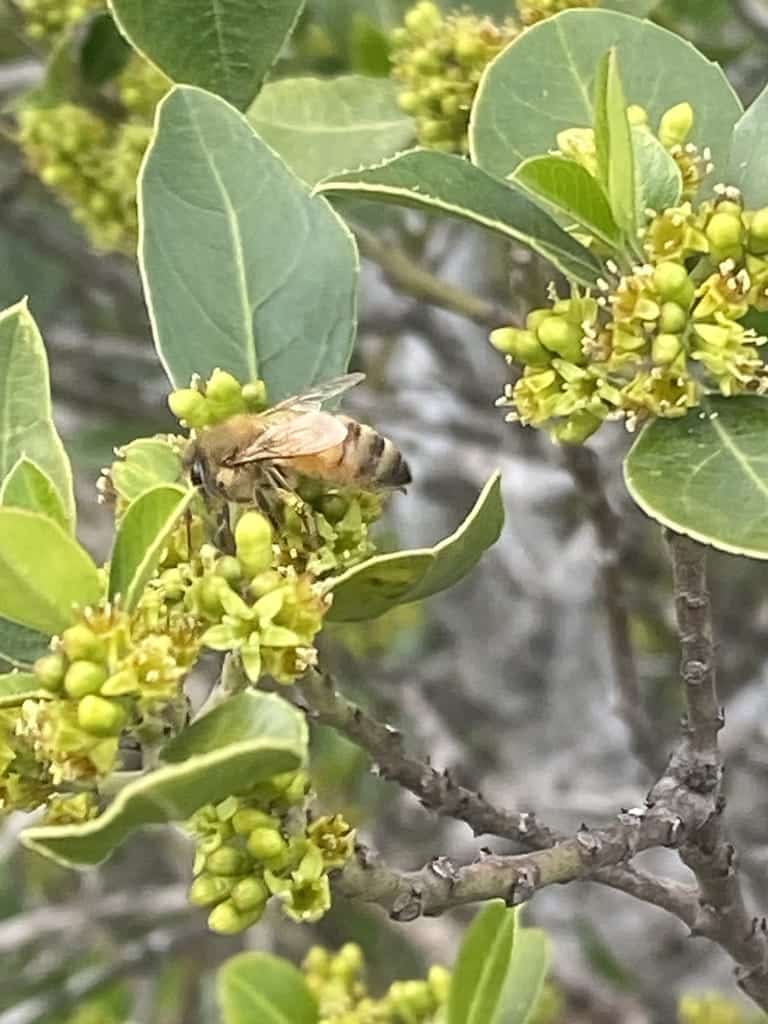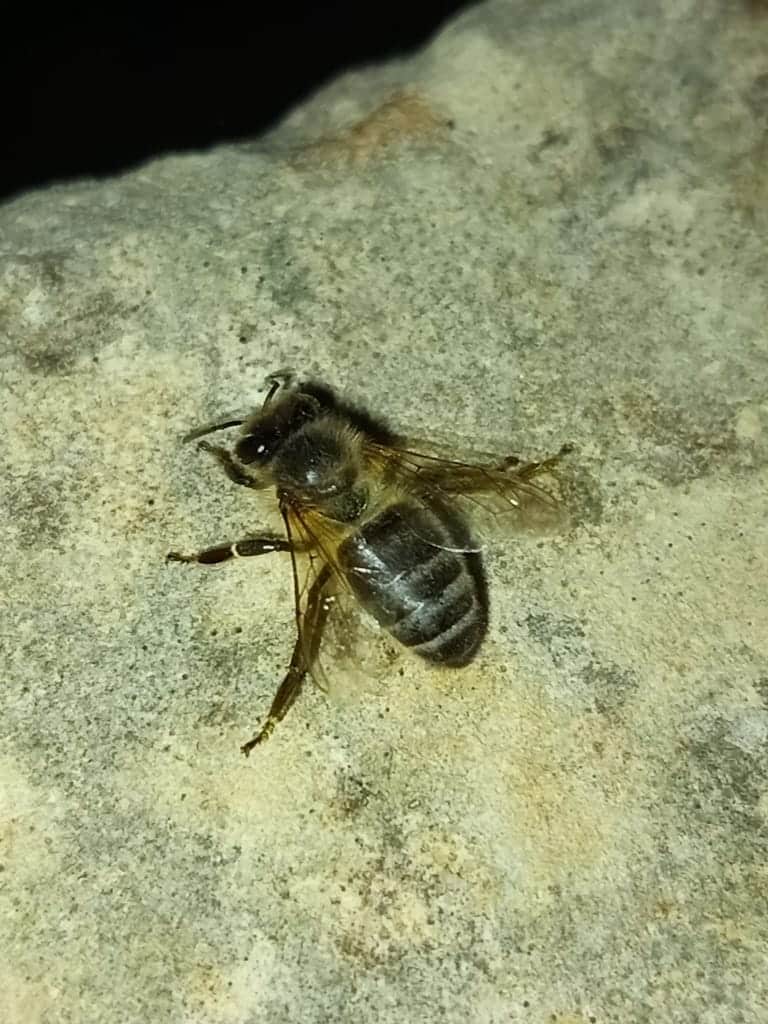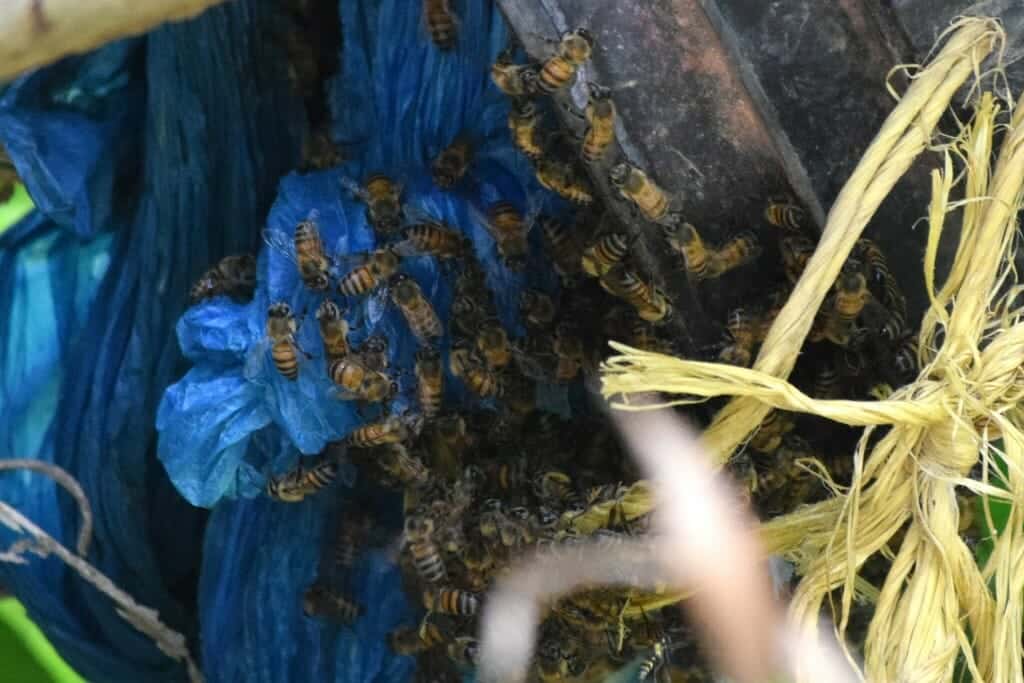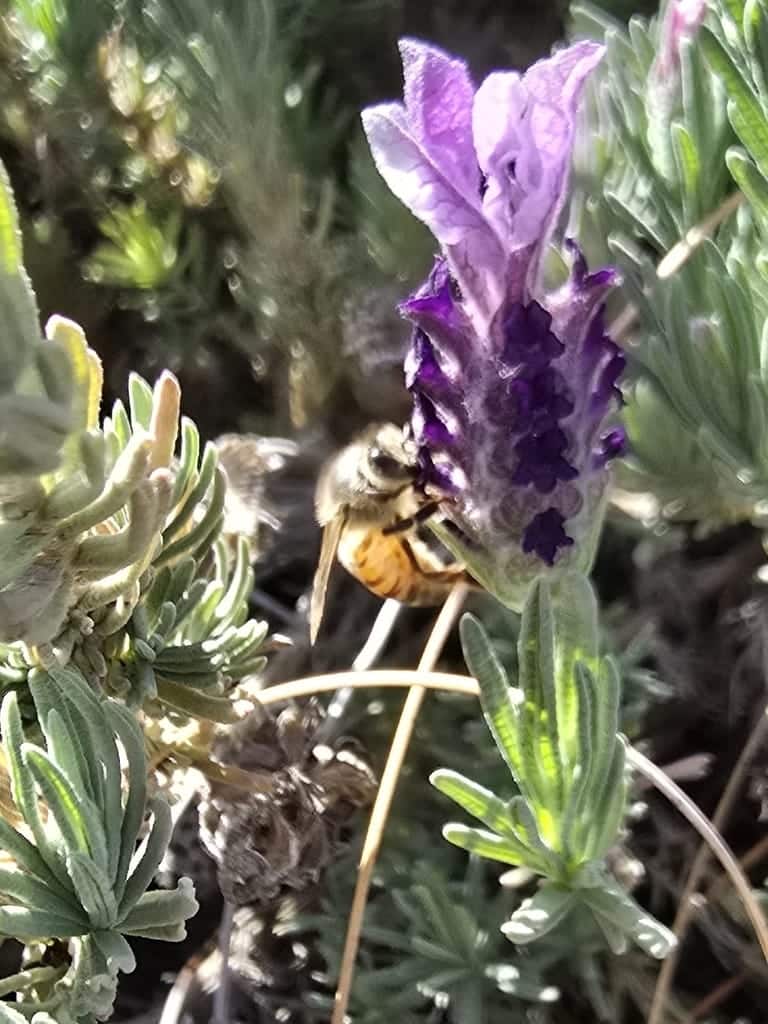All About Honey Bees
Essential pollinators that play a critical role in ecosystems and agriculture.
Quick Facts about Honey Bees

Honey Bees Identification Guide
Physical Characteristics
Honey bees are small, golden-brown insects with black stripes and fine body hairs that help collect pollen. They have two pairs of translucent wings, bent antennae, and a barbed stinger that they use only when they feel threatened. Unlike wasps, their bodies appear fuzzy due to the fine hairs covering their thorax and abdomen. Worker bees typically grow to about half an inch in length.
Common Species
-
European Honey Bee (Apis mellifera) - The most widespread and domesticated species used for honey production and pollination.
-
Carniolan Honey Bee (Apis mellifera carnica) - Known for their gentle nature and resilience in colder climates.
-
Italian Honey Bee (Apis mellifera ligustica) - Popular for their productivity and ease of management.
Honey Bees Behavior and Biology
Honey bees are highly social insects that live in well-organized colonies consisting of a queen, thousands of worker bees, and a few hundred drones. The queen’s primary role is to lay eggs, while worker bees maintain the hive, collect nectar, and defend against threats. Colonies build wax combs inside natural cavities or human-made hives, where they store honey and pollen for sustenance. Their foraging activity is critical for pollinating a vast number of plant species.
How We Treat for Honey Bees
We do not treat for honey bees. Honey bees are an essential and protected species due to their role in pollination and their declining populations. If you have a honey bee colony on your property, we recommend reaching out to a local beekeeper who can safely relocate the hive without harming the bees. Many beekeepers provide free or low-cost removal services to help protect these crucial pollinators.
Common Questions about Honey Bees
Are honey bees dangerous?
+
Honey bees are generally non-aggressive and only sting when they feel threatened. Unlike wasps, they have a barbed stinger that remains embedded in the skin after stinging, causing the bee to die shortly afterward.
How can I tell if I have honey bees or wasps?
+
Honey bees have fuzzy, golden-brown bodies with black stripes, while wasps tend to have smooth, shinier bodies with more distinct black and yellow markings. Wasps are also more aggressive and tend to build paper nests, whereas honey bees build wax combs.
What should I do if I find a honey bee swarm?
+
If you encounter a swarm of honey bees, do not disturb them. Swarms are temporary, and the bees are usually looking for a new home. Contact a local beekeeper, as they can often relocate the swarm safely without harming the bees.
Can honey bees be removed without being harmed?
+
Yes, many beekeepers specialize in humane honey bee removal. They use techniques to safely capture and relocate the colony without using pesticides or causing harm.
Why don't we treat for honey bees?
+
Honey bees are a protected species due to their essential role in pollination. Their populations have been declining due to habitat loss, pesticides, and diseases, so our policy is to refer homeowners to beekeepers who can relocate them safely.
How can I prevent honey bees from nesting in my home?
+
To reduce the chance of a honey bee colony setting up in your home, seal any gaps or openings in walls, chimneys, and eaves. If you notice bees entering a structure, act quickly to call a beekeeper before they establish a full hive inside.
Do honey bees cause property damage?
+
Honey bees don't intentionally damage property, but if they build a hive inside wall voids, the wax and honey can create structural issues over time. Removing the hive properly is crucial to prevent problems like melting wax attracting other pests.
More Resources About Honey Bees
Explore our guides and articles for more information about honey bees.
- ›How to Get Rid of Carpenter Bees: Pro Methods That Work
- ›How To Kill Ground Bees: Complete Guide For Homeowners
- ›Carpenter Bee vs Bumblebee: Identify Which Is in Your Yard
- ›Bumblebee vs Carpenter Bee: Which One Damages Homes?
- ›Honeybee vs Bumblebee: Identify & Manage These Pollinators
- ›Types of Hornets and Wasps: ID Guide for Homeowners
- ›June Bug vs Japanese Beetle: Identify & Control These Pests
- ›Carpenter Bee Holes: What They Look Like & How to Fix Them
- ›Ladybugs vs Asian Lady Beetles: Know the Differences This Fall
- ›Types of Wasp Nests: How to Identify and Remove Them
- ›How to Stop Elm Leaf Beetle Home Invasions in the DMV
- ›Cockroach vs Beetle: Identifying Which Pest Is in Your Home
- ›Wasp vs Bee vs Hornet: How to Tell What's Buzzing Around
- ›Carpenter Bee Damage: Signs, Effects, and Prevention Methods
- ›Yellow Jacket Nest vs Paper Wasp Nest: How to Tell Them Apart
- ›Do Carpenter Bees Sting? Get the Facts and Control Tips
- ›Little Black Beetles in House? Identify & Treat Them Today
- ›Do Bumble Bees Die When They Sting or Can They Sting Again?
- ›Paper Wasp Queen vs Worker: What You Need to Know
- ›Yellow Jacket vs Wasp: Know Your Hornets and Paper Wasps
- ›Click Beetle vs Cockroach: Key Differences Explained
- ›Ground Beetles in House? How to Identify and Remove Them
- ›Complete Guide to Wasps in Maryland: Types, Nests & Control
- ›Asian Beetles vs Ladybugs: Which Is More Harmful?
- ›Foreign Grain Beetles: Signs of Moisture Problems
- ›Sawtoothed Grain Beetle: Identifying and Eliminating Them
- ›Ladybugs vs Asian Beetles: ID Guide & Control Methods
- ›European Hornet Nest: What They Look Like & Treatment
- ›Hornet vs Wasp: How to Identify Common DC Area Species
- ›Spot the Red and Black Beetle: Boxelder Bug Identification Guide
- ›Bugs That Look Like Ladybugs: Asian Beetles & Other Mimics
- ›Ground Hornet Facts: Appearance and Effective Treatments
Find Local Honey Bee Control Services
We provide professional honey bees control throughout Virginia, Maryland, and the DC Metro area.



